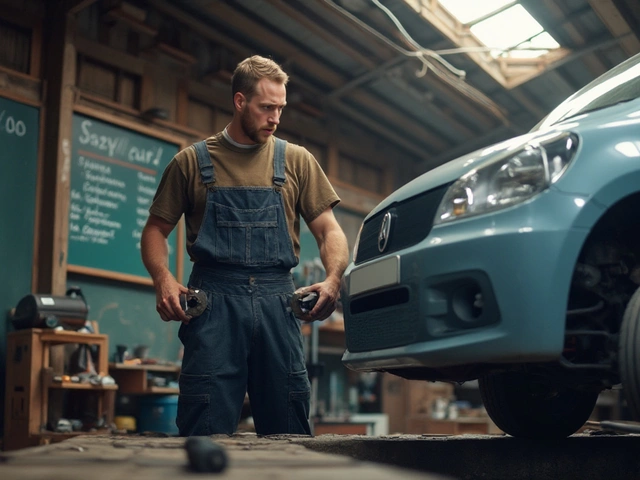Filter Restriction Guide: Spot, Fix & Prevent Blockages
Ever felt a loss of power, strange noises, or a sudden drop in fuel efficiency? Chances are a filter is choking the flow. Whether it’s the engine’s air filter, the fuel pump filter, or the cabin filter, a restriction can turn a smooth drive into a headache. This guide shows you how to spot the problem, clear it, and keep it from coming back.
How to Identify a Restriction
The first clue is performance. A clogged air filter squeezes the amount of clean air reaching the engine, so you’ll notice slower acceleration and higher fuel use. A blocked fuel filter can cause hesitation when you press the gas, or even make the engine stall. Inside the cabin, a dirty filter reduces airflow, fogging up the windows and making the AC work harder.
Listen for unusual sounds. A whistling noise often means air is being forced through a tight spot. A whining from the fuel system? That’s the pump struggling against a clogged screen. And if you smell a burnt odor around the engine, the filter may be overloaded and heating up.
Simple Steps to Clear the Restriction
Start with the easiest part – the air filter. Open the engine bay, locate the rectangular box, and pull out the filter. If it looks dark and full of debris, replace it with a new one. A cheap replacement can be bought for a few pounds and takes less than five minutes to install.
Next, check the fuel filter. It’s usually tucked under the car near the fuel tank. Relieve the fuel pressure (consult your owner’s manual), remove the filter housing, and swap the old filter for a fresh one. Make sure the new filter faces the correct direction – there’s an arrow on the housing that points downstream.
For the cabin filter, open the glove box or the trunk (depends on the model), slide the filter out, and give it a tap. If it’s visibly dirty, slide in a new filter. This not only improves airflow but also cuts down on pollen and dust inside your car.
After any replacement, start the engine and let it idle for a minute. Listen for smoother operation and watch for any warning lights. If everything feels normal, you’ve cleared the restriction.
Regular maintenance is the best defense. Check the air filter every 10,000 miles or sooner if you drive on dusty roads. Fuel filters should be swapped at the interval the manufacturer recommends – often every 30,000 miles. Cabin filters deserve a look at least once a year, especially during allergy season.
Preventing future blockages also means keeping the intake system clean. A quick spray of fresh air into the intake while the engine runs can blow out loose debris. Also, use good‑quality fuel from reputable stations to avoid sediment that can clog the fuel filter.
If you follow these steps, you’ll keep the engine breathing easy, the fuel flowing smooth, and the cabin fresh. A clean filter means better performance, lower fuel bills, and fewer surprise repairs. Got a stubborn issue? It might be time to let a professional at Northwich Tyres Centre give it a deeper look – they’ve got the tools and know‑how to tackle any hidden restriction.
 22 May 2025
22 May 2025
MERV 11 Filters: Are They Too Restrictive for Your HVAC?
Worried that a MERV 11 filter could restrict your HVAC airflow or bump up your energy bills? This article digs into what makes MERV 11 filters different, explains how they work with typical home systems, and shares facts that could save you money and hassle. You'll find out if these filters are really too much, or if they're just right for better air quality. We'll go over real-life tips and help you decide if you actually need this level of filtration. Stop guessing—get the answers you need to keep your air clean without wrecking your system.
Latest Posts
-

Understanding the Cost of Suspension Repairs: What You Need to Know
-

Bad Spark Plug Symptoms and Effects: What Happens if Your Spark Plugs Are Failing?
-

How to Test a Bad Fuel Pump: Signs, DIY Diagnostics, and Fixes
-

Does a Full Exhaust Add HP?
-

British Terms for Car Components: Understanding Windscreen Wipers

0